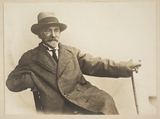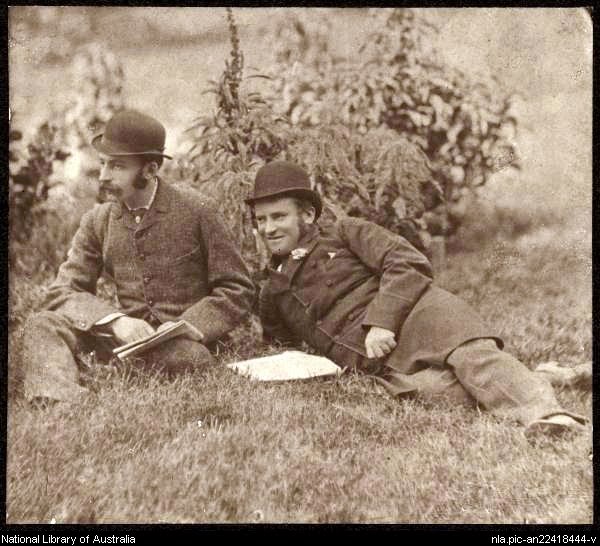 Francis Thomas Dean Carrington (1843-1918)
Francis Thomas Dean Carrington (1843-1918)
was born in London. He studied in Paris before moving to Melbourne in the 1860s and pursuing a career. He was a cartoonist for Melbourne Punch, and cartoonist and writer for the Australasian Sketcher.
His political cartoons were published across several newspapers and magazines, such as the Australian Journal, the Melbourne Punch, the Touchstone, and the Australasian. He also illustrated several books including Long Odds by Marcus Clarke and Punchialities from Punch.
He wrote for the Argus, under the pseudonym ‘Leonardo’ and for the Australasian under ‘Ixion’. His final cartoon, ‘The Last of the Session’, appeared in Punch on 15 December 1887.
In June 1880, alongside journalists George Allen (Melbourne Daily Telegraph), John McWhirter (Age), and JD Melvin (Argus), Carrington joined the special train accompanying the police to Glenrowan, to cover the last siege of Ned Kelly.
His article ‘Catching the Kellys: a personal narrative of one who went in the special train’ was published in The Australasian on Saturday 3 July, 1880. This article, written in the first person, evocatively describes the siege and capture of Kelly at Glenrowan. It was republished across several newspapers, including the Argus and the West Australian. Carrington’s illustrations of the siege and its aftermath for the Australasian Sketcher are among his most famous drawings. Together, his words and images underpin the way Ned Kelly is remembered in Australian history and cultural mythology.
In 2003, Jones edited the mini-book, Ned Kelly The Last Stand, Written and Illustrated by an Eye Witness, which republished the Glenrowan account by Carrington within a personal and historical context.
Selected works:
- Carrington, T. (1880, July 3) “Catching the Kellys: a personal narrative of one who went in the special train” , Australasian, p.189.
Bibliography:
Jones, I, (ed) (2003) Ned Kelly, The Last Stand, Written and Illustrated by an Eyewitness, Lothian: South Melbourne.

